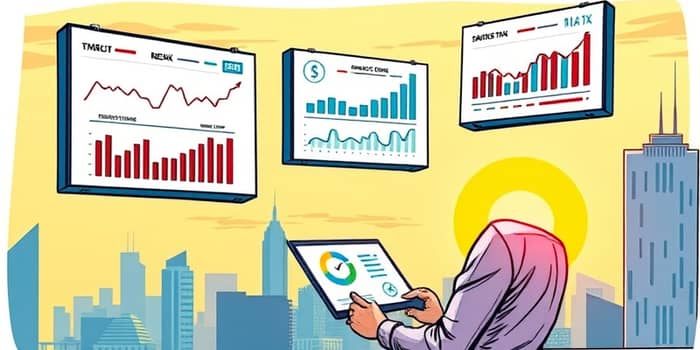
In an era defined by uncertainty, mastering portfolio protection requires more than intuition—it demands an analytical, forward-looking approach. As markets evolve beneath layers of geopolitical tension, climate change, and rapid technological progress, investors must harness sophisticated metrics to navigate volatility.
The mid-2020s have ushered in persistent macroeconomic uncertainty. Supply chain disruptions, multidecade high inflation, shifting interest rates, and geopolitical flashpoints are shaping market behavior in unpredictable ways. Simultaneously, environmental considerations bring extreme weather events and transition policy risks directly into the financial conversation.
Against this backdrop, technology and data science have stepped into the spotlight. Artificial intelligence and machine learning power real-time risk monitoring and dynamic risk reporting, offering granular insights into emerging threats. Regulatory scrutiny, while stable in mandates, grows more demanding in transparency, requiring institutions to deliver frequent, clear reports to stakeholders.
Investor expectations have also shifted. Retail participants and ultra-high-net-worth individuals now demand continuous updates on risk exposures and tangible evidence of stress-testing. In response, asset managers are adopting advanced metrics to maintain trust and performance.
A robust risk framework begins with well-defined metrics. The table below outlines the most critical measures, their applications, and real-world relevance.
Understanding these metrics provides a solid foundation for more advanced techniques. Each measure reveals a unique dimension of risk, from everyday fluctuations to catastrophic tail events.
To complement standard metrics, practitioners deploy a suite of sophisticated tools that test portfolio resilience under extreme conditions and guide proactive adjustments.
These methodologies foster a proactive stance, ensuring that portfolios are not merely monitored, but continuously stress-tested against evolving threats.
Looking beyond traditional markets, new sources of risk demand innovative responses:
These emerging tools foster greater confidence, enabling investors to envision a broad array of future scenarios.
Translating metrics into action requires systems, processes, and clear communication. Key steps include:
By embedding these processes, firms transform raw data into strategic insights, strengthening client confidence and competitive edge.
Risk management is not a destination but a continuous journey. As markets grow more interconnected and novel threats emerge, investors must foster a culture of adaptability. By combining foundational metrics like VaR and drawdown with advanced techniques—stress testing, AI analytics, and climate modeling—portfolios can withstand turbulence and seize long-term opportunities.
Ultimately, the most successful investors view risk not as an obstacle, but as a navigable frontier. Armed with state-of-the-art quantitative tools and a commitment to aligning risk metrics with objectives, they chart a path toward sustainable growth and resilience.
References













